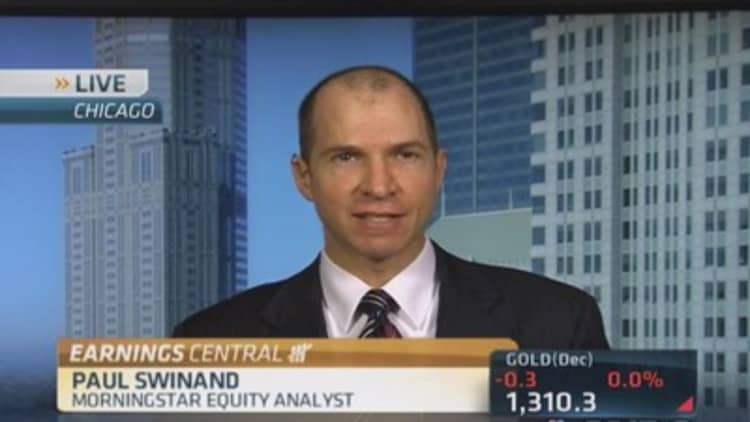If you haven't seen anything like this year's weather, well, neither has anyone else.
This year is on track to set a temperature record that climate researchers say is unique since the first time stats were taken in 1900.
A typical year in the U.S. would see near-average temperatures or a spike in either extremely cold or extremely warm temperatures. But this is the first year in which both cold and warm temperatures have ranged far outside the norms, according to the National Climatic Data Center.
Through July, at least, "this is the most unusual year on record" when it comes to that data, Deke Arndt, the NCDC's chief of climate monitoring, told NBC News. "We haven't seen this much extreme warmth entrenched alongside this much extreme cold for this long since at least 1900."
These abnormal temperatures aren't necessarily records for heat or cold. What's unusual is the persistence of temperatures above or below average. It's a trend that goes back to the start of the year and is tied to the now infamous "polar vortex" that started with cold winter Arctic air coming in as the jet stream dipped south.
"It's indicative of how 'stuck' the pattern has been this year—consistently cool in the East and consistently warm in the West," said Nick Wiltgen, a forecaster at The Weather Channel.
What Arndt calls "bipolar" conditions even led to July temperatures that for the U.S. overall were near average. "So the very cool conditions in the Midwest and warm conditions in the West really canceled each other out," he said
More from NBC News:
Let them sleep in: Docs want later school times for teens
'Rubble Bucket Challenge' takes off in devastated Gaza
FBI shreds millions of files, goes all-digital
So what gives?
Cooler air from Canada is pushing against the jet stream, causing it to dip farther down, creating a U-shaped path across the U.S. "That ridge out West keeps it warm and that trough in the East keeps it cool," NBC meteorologist Dylan Dreyer explained in a recent report about the odd conditions.
Arndt agrees. "The big cold-air outbreaks in the Great Lakes and Midwest early in the year started the pattern" of cooler temperatures east of the Rockies, he said. "And those were reinforced several times during the spring, and dramatically in July."
Read MoreIs climate change key to the spread of Ebola?
"The western warmth has been persistent all year," he said, and California is heading for a record warm year as it suffers in a decade-long drought.
The "bipolar" conditions have had at least one major contribution to the U.S. economy.
"In the northern plains, it's unusual for very cool conditions and very dry to exist simultaneously in the summer," said South Dakota state climatologist Dennis Todey. And that combo has helped push U.S. corn production to record levels.
"We've had more outbreaks of Canadian air," he said, "which tends to be dry and less humid."

The conditions might not last much longer—at least for the Atlantic states.
The Climate Prediction Center, like the NCDC part of the National Oceanic and Atmospheric Administration, expects above-average temperatures to settle in along the Atlantic coast this fall.
California, on the other hand, should continue to wither in its drought.
A weak El Nino, a periodic cycle that can trigger rains, is predicted by late fall, notes CPC forecaster Anthony Artusa.
Read MoreBuzzkill! Drought saps California honey production
But "for California to see much relief, that would almost require a pretty strong El Nino," he said, "and we just don't see that happening right now.
—By NBC News' Miguel Llanos

